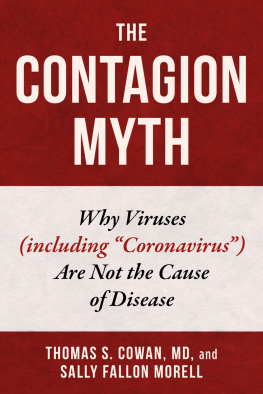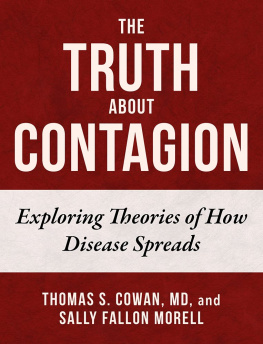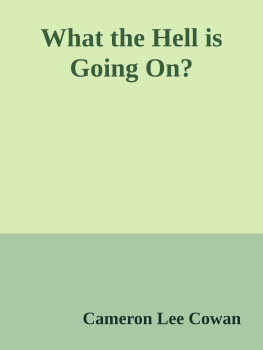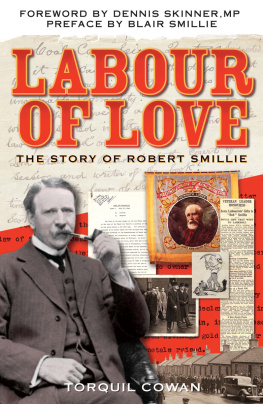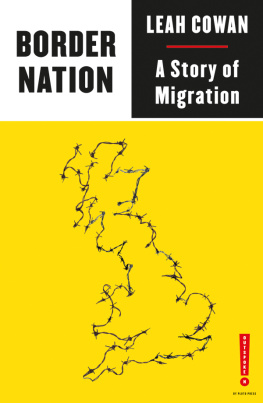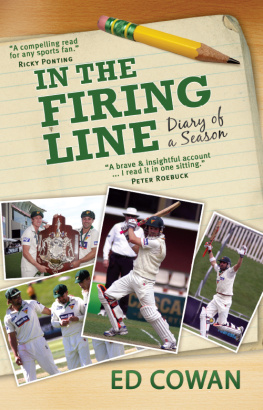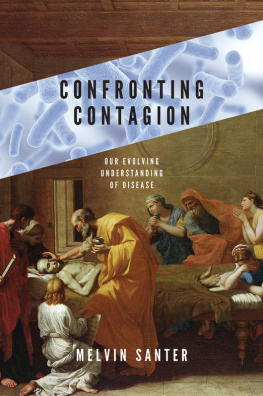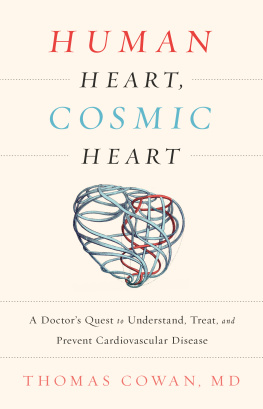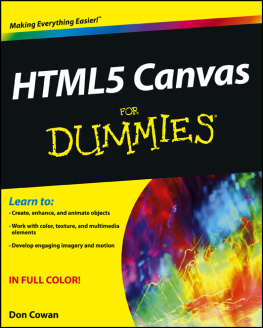Thomas S. Cowan - The Contagion Myth
Here you can read online Thomas S. Cowan - The Contagion Myth full text of the book (entire story) in english for free. Download pdf and epub, get meaning, cover and reviews about this ebook. year: 2020, publisher: Skyhorse, genre: Romance novel. Description of the work, (preface) as well as reviews are available. Best literature library LitArk.com created for fans of good reading and offers a wide selection of genres:
Romance novel
Science fiction
Adventure
Detective
Science
History
Home and family
Prose
Art
Politics
Computer
Non-fiction
Religion
Business
Children
Humor
Choose a favorite category and find really read worthwhile books. Enjoy immersion in the world of imagination, feel the emotions of the characters or learn something new for yourself, make an fascinating discovery.
- Book:The Contagion Myth
- Author:
- Publisher:Skyhorse
- Genre:
- Year:2020
- Rating:5 / 5
- Favourites:Add to favourites
- Your mark:
- 100
- 1
- 2
- 3
- 4
- 5
The Contagion Myth: summary, description and annotation
We offer to read an annotation, description, summary or preface (depends on what the author of the book "The Contagion Myth" wrote himself). If you haven't found the necessary information about the book — write in the comments, we will try to find it.
The Contagion Myth — read online for free the complete book (whole text) full work
Below is the text of the book, divided by pages. System saving the place of the last page read, allows you to conveniently read the book "The Contagion Myth" online for free, without having to search again every time where you left off. Put a bookmark, and you can go to the page where you finished reading at any time.
Font size:
Interval:
Bookmark:

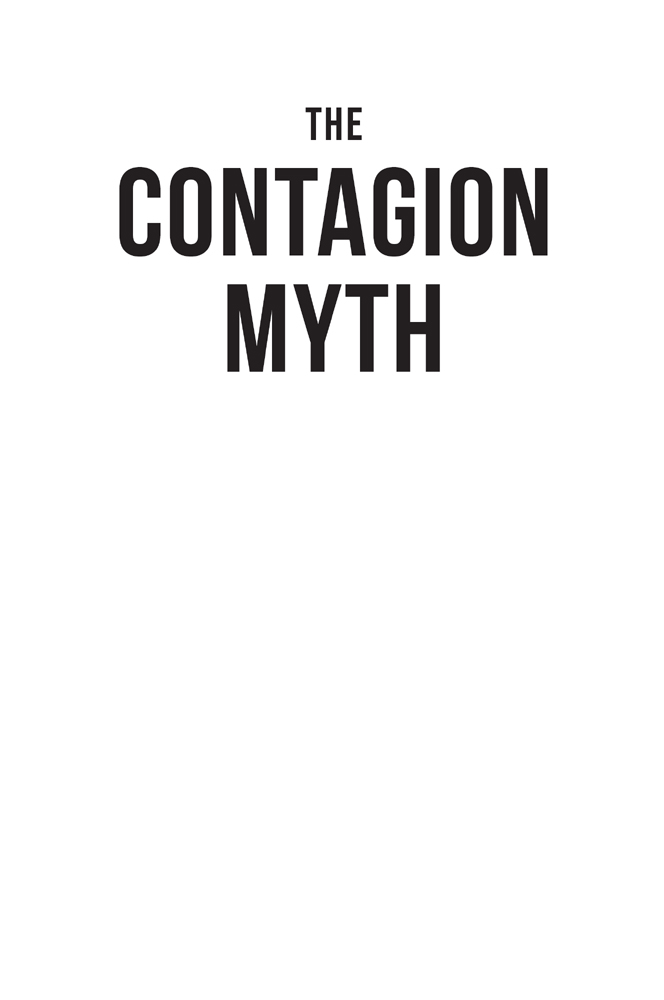
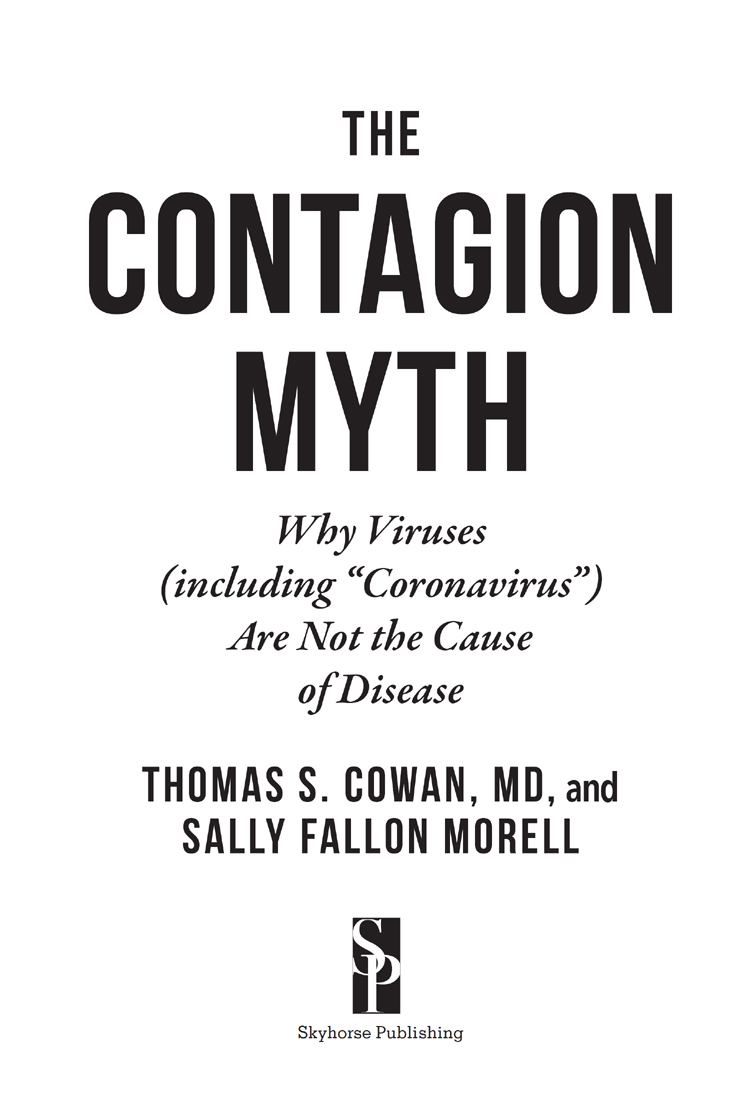
Copyright 2020 by Thomas S. Cowan, MD, and Sally Fallon Morell
All rights reserved. No part of this book may be reproduced in any manner without the express written consent of the publisher, except in the case of brief excerpts in critical reviews or articles. All inquiries should be addressed to Skyhorse Publishing, 307 West 36th Street, 11th Floor, New York, NY 10018.
Skyhorse Publishing books may be purchased in bulk at special discounts for sales promotion, corporate gifts, fund-raising, or educational purposes. Special editions can also be created to specifications. For details, contact the Special Sales Department, Skyhorse Publishing, 307 West 36th Street, 11th Floor, New York, NY 10018 or .
Skyhorse and Skyhorse Publishing are registered trademarks of Skyhorse Publishing, Inc., a Delaware corporation.
Visit our website at www.skyhorsepublishing.com.
10 9 8 7 6 5 4 3 2 1
Library of Congress Cataloging-in-Publication Data is available on file.
Print ISBN: 978-1-5107-6462-0
Ebook ISBN: 978-1-5107-6464-4
Printed in the United States of America
Disclaimer
The information contained herein should NOT be used as a substitute for the advice of an appropriately qualified and licensed physician or other health care provider. The information provided here is for informational purposes only. Although we attempt to provide accurate and up-to-date information, no guarantee is made to that effect. In the event you use any of the information in this book for yourself, the authors and the publisher assume no responsibility for your actions.
CONTENTS
The ping-pong ball and the wall; Kochs postulates; Rivers postulates; Louis Pasteur and how he cheated.
Early electrical experiments; global electrification and influenza; worldwide radio and the Spanish flu; the Spanish flu was not contagious; cell phones and increased death; 5G implementation and the spread of Covid-19; symptoms of electrical sensitivity; evidence of harm from millimeter wave technology.
Comets and the Black Death; insect poisons and environmental toxins; Dr. Charles Campbell solves the riddle of smallpox; bats against mosquitoes; Robert Koch on TB and how he cheated; Dr. Weston Prices observations on TB; polio and DDT; vaccine- induced paralysis; Native American diseases; Stefan Lanka and the measles virus.
From the War on Cancer to the War on AIDS; the true causes of AIDS; AZT for AIDS patients; outbreak of Covid in Wuhan; Chinese research does not find a virus.
The Alice-in-Wonderland world of coronavirus testing; the story of Stefan Lanka; the failed hunt for the coronavirus; the PCR test versus the gold standard; antibody testing.
Louis Pasteur and the contagion theory; social Darwinism; microscopes and germs; exosomes are viruses; fear and stress produce exosomes; nature a cooperative venture.
Virology and the fork in the road; the nature of life; the discovery of resonance; resonance and childhood diseases; resonance and evolution.
The work of Gerald Pollack and Gilbert Ling; the four phases of water; water and electrical processes in the cell; the characteristics of life-giving water.
Vegetable oils; animal fats and cell membrane integrity; 5G and niacin depletion; the displacing foods of modern commerce; plant-based diets; raw milk; bone broth, fermented foods; salt; the microwave oven.
Toxins in the ancient world; modern toxins; toxins in food; modern drugs; glyphosate and biofuels; the aluminum age; toxins in vaccines.
The most widespread and pervasive toxin of the modern age; creating our world out of our consciousness; how fear and lies lead to illness.
The numbersIs Covid underestimated or overestimated?; alarming symptoms; treatment; masks; social distancing; 5G and the appearance of contagion.
Jenner and the smallpox vaccine; Pasteur and the rabies vaccine; the doctrine of immunity; making modern vaccines; problems with the vaccine; a new etiquette; cleaning up electro-smog.
What is man?; 5G and the future of the Earth.
PREFACE
by Sally Fallon Morell
Since the dawn of the human race, medicine men and physicians have wondered about the cause of disease, especially what we call contagions. Numerous people become ill with similar symptoms, all at the same time. Does humankind suffer these outbreaks at the hands of an angry god or evil spirit? A disturbance in the atmosphere? A miasma? Do we catch the illness from others or from some outside influence?
With the invention of the microscope in 1670 and the discovery of bacteria, doctors had a new candidate to blame: tiny one-celled organisms that humans could pass from one to another through contact and exhalation. But the germ theory of disease did not take hold until two hundred years later with celebrity scientist Louis Pasteur and soon became the explanation for most illness.
Recognition of nutritional deficiencies as a cause of diseases like scurvy, pellagra, and beriberi took decades because the germ theory became the explanation for everything that ails the human being. As Robert R. Williams, one of the discoverers of thiamine (vitamin B1) lamented, all young physicians were so imbued with the idea of infection as the cause of disease that it presently came to be accepted as almost axiomatic that disease could have no other cause [other than microbes]. The preoccupation of physicians with infection as a cause of disease was doubtless responsible for many digressions from attention to food as the causal factor of beriberi.
During the Spanish flu pandemic of 1918, the deadliest example of a contagion in recent history, doctors struggled to explain the worldwide reach of the illness. It sickened an estimated five hundred million peopleabout one-third of the planets populationand killed between twenty to fifty million people. It seemed to appear spontaneously in different parts of the world, striking the young and healthy, including many American servicemen. Some communities shut down schools, businesses, and theaters; people were ordered to wear masks and refrain from shaking hands, to stop the contagion.
But was it contagious? Health officials in those days believed that the cause of the Spanish flu was a microorganism called Pfeiffers bacillus, and they were interested in the question of how the organism could spread so quickly. To answer that question, doctors from the US Public Health Service tried to infect one hundred healthy volunteers between the ages of eighteen and twenty-five by collecting mucous secretions from the noses, throats, and upper respiratory tracts of those who were sick. They transferred these secretions to the noses, mouths, and lungs of the volunteers, but not one of them succumbed; blood of sick donors was injected into the blood of the volunteers, but they remained stubbornly healthy; finally they instructed those afflicted to breathe and cough over the healthy volunteers, but the results were the same: the Spanish flu was not contagious, and physicians could attach no blame to the accused bacterium.
Pasteur believed that the healthy human body was sterile and became sick only when invaded by bacteriaa view that dominated the practice of medicine for over a century. In recent years we have witnessed a complete reversal of the reigning medical paradigmthat bacteria attack us and make us sick. We have learned that the digestive tract of a healthy person contains up to six pounds of bacteria, which play many beneficial rolesthey protect us against toxins, support the immune system, help digest our food, create vitamins, and even produce feel good chemicals. Bacteria that coat the skin and line the vaginal tract play equally protective roles. These discoveries call into question many current medical practicesfrom antibiotics to hand washing. Indeed, researchers have become increasingly frustrated in their attempts to prove that bacteria make us sick, except as coactors in extremely unnatural conditions.
Next pageFont size:
Interval:
Bookmark:
Similar books «The Contagion Myth»
Look at similar books to The Contagion Myth. We have selected literature similar in name and meaning in the hope of providing readers with more options to find new, interesting, not yet read works.
Discussion, reviews of the book The Contagion Myth and just readers' own opinions. Leave your comments, write what you think about the work, its meaning or the main characters. Specify what exactly you liked and what you didn't like, and why you think so.

